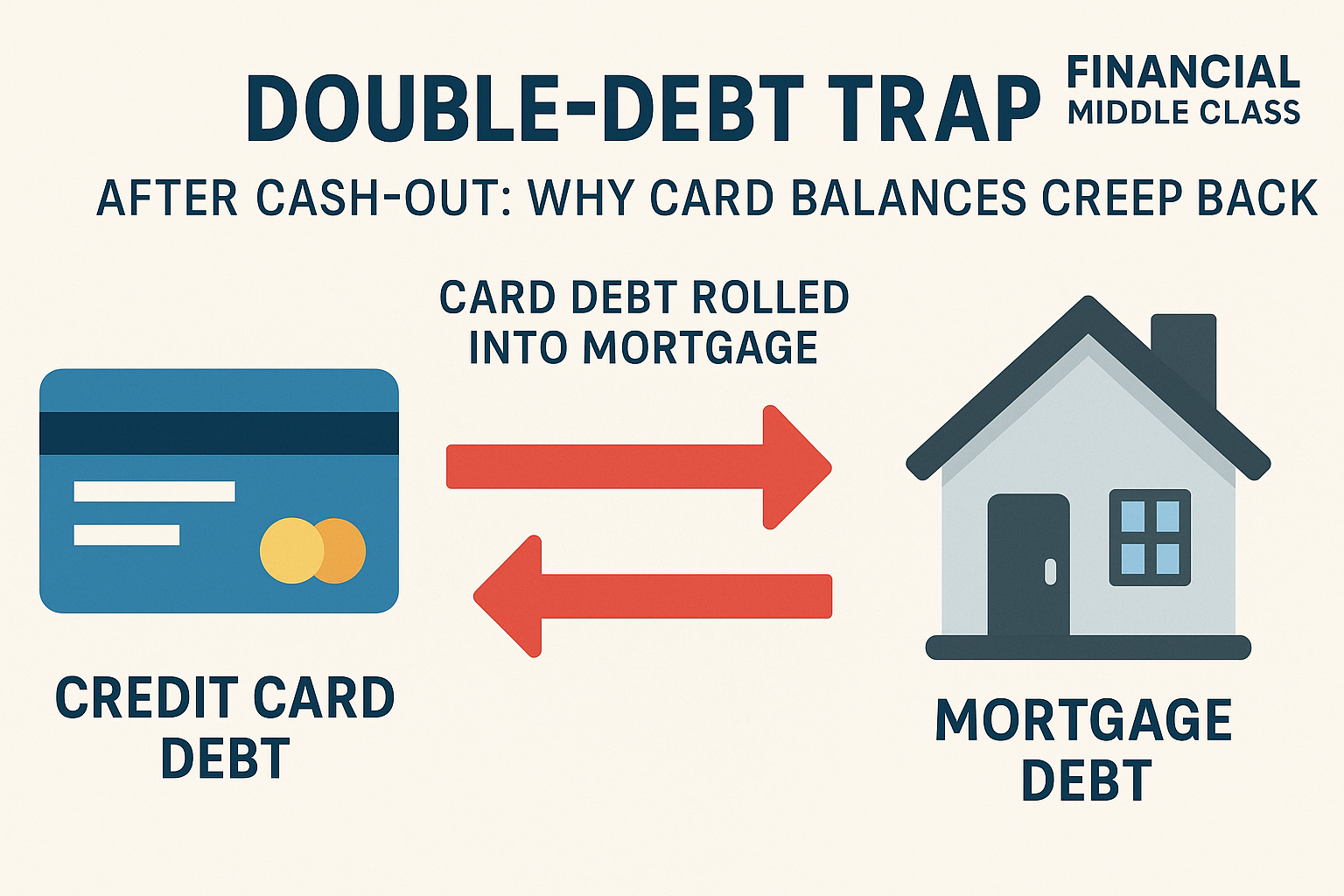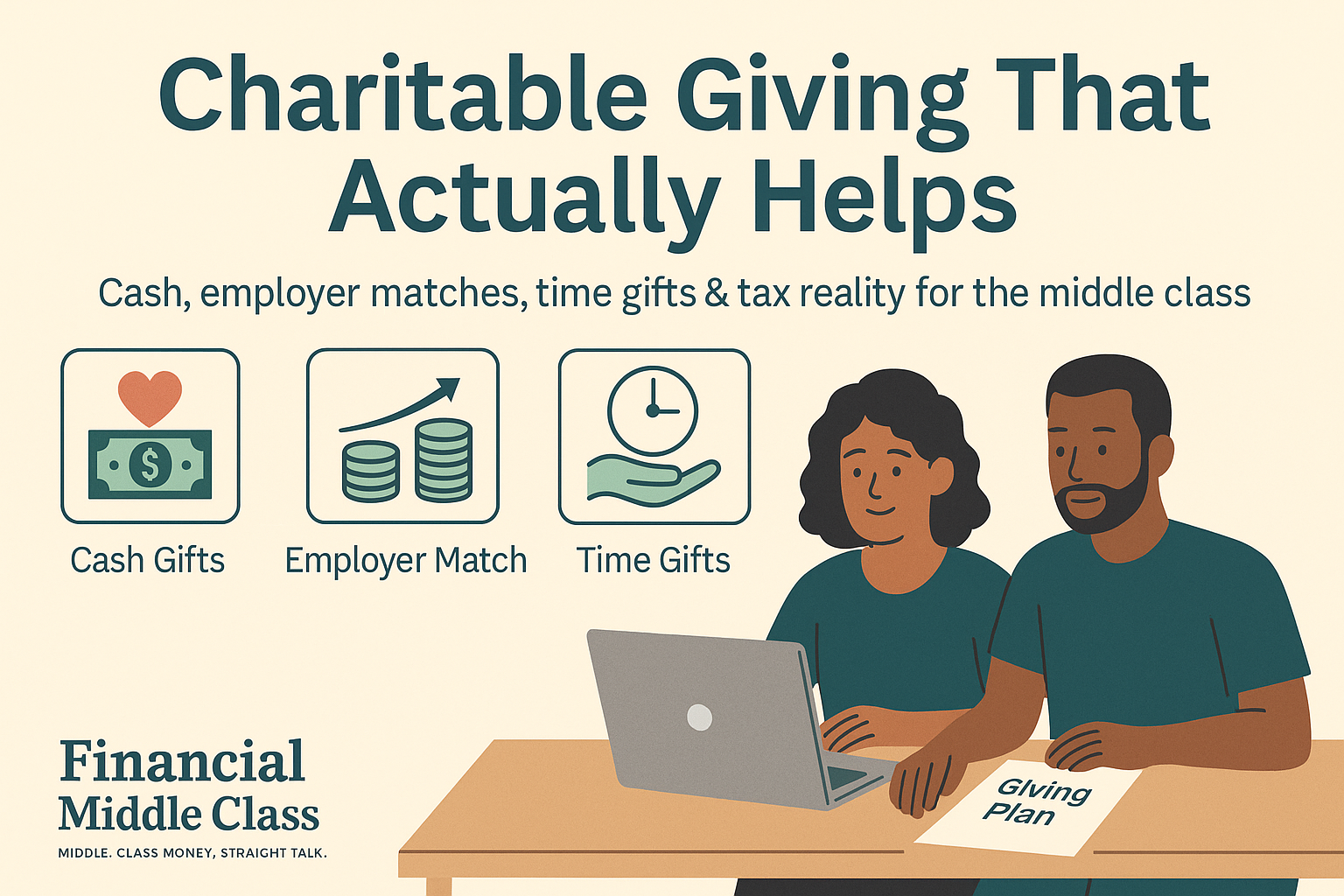
If You Have More Than $1,000 in Your Savings Account, Here Are 10 Money Moves
By Article Posted by Staff Contributor
The estimated reading time for this post is 245 seconds
Introduction: Why $1,000 Matters but Isn’t Enough
Let’s start with a reality check. The median emergency savings in America is about $600–$1,000, according to multiple surveys. Nearly 1 in 4 people have no savings at all, and only 46% of Americans can cover three months of expenses if disaster strikes.
So, if you already have more than $1,000 sitting in your savings account, you’re ahead of the curve. But here’s the trap: stopping there. A thousand dollars might cover a car repair or a new fridge, but it won’t save you if you lose your job, face a medical bill, or get hit with back-to-back expenses.
Having a cushion is step one. Growing it and putting it to work is step two. Here are 10 money moves to make once you’ve crossed that $1,000 milestone.
1. Fortify Your Emergency Fund
A thousand dollars is a start, not the finish line. The gold standard is 3–6 months of expenses tucked away in a liquid account. Why? Because emergencies don’t show up one at a time. Job losses, health scares, or back-to-back repairs can pile up fast.
👉 Action: Figure out your monthly burn rate. Multiply it by three. That’s your new savings target. Keep it in a high-yield savings account (HYSA) where your money earns more than pennies.
2. Attack High-Interest Debt
Credit card debt at 20%+ APR is a wealth killer. If you’ve got more than $1,000 saved and you’re still carrying revolving balances, you’re losing money every month.
👉 Action: Take a portion of your savings beyond that $1,000 buffer and hammer down credit card balances. The “return” on paying off debt often beats any investment.
3. Automate Your Savings
Here’s where most people fail: they save what’s left after spending. Spoiler — nothing is usually left.
👉 Action: Automate transfers from checking to savings or investments right after payday. Even $100 a month snowballs. Set it and forget it.
4. Move Your Money to a High-Yield Savings Account (HYSA)
Traditional banks pay 0.01% interest — basically nothing. Meanwhile, online banks and credit unions are paying 4–5% as of 2025.
👉 Example: $5,000 in a 4.5% HYSA earns $225/year. The same money in a traditional account earns about $1.
👉 Action: Don’t leave free money on the table. Upgrade where you park your cash.
5. Protect Yourself With Insurance
Nothing wipes out a savings account faster than an uncovered emergency. Medical bills and car accidents are two of the top reasons people drain their accounts.
👉 Action: Review your coverage — health, renters or homeowners, auto, and disability. Good insurance keeps your emergency fund intact for actual emergencies.
6. Start Retirement Savings (401k / IRA)
Here’s a mistake too many middle-class households make: waiting until they “have enough saved” before investing. The truth? Time in the market beats timing the market.
👉 Action: If your employer matches 401(k) contributions, contribute at least enough to get the full match. That’s a 100% return, no debate. If not, open a Roth IRA and start with small, consistent contributions.
7. Invest Beyond Retirement Accounts
Your emergency fund protects you. Your investments grow your wealth. Don’t confuse the two.
👉 Action: Once you have a comfortable cushion, start investing in low-cost index funds or ETFs. That’s how you outpace inflation and build long-term wealth.
8. Plan for Medium-Term Goals
Not every financial goal is 30 years away. Cars, weddings, vacations, and home down payments all need their own buckets.
👉 Action: Use “sinking funds” — separate savings accounts for each goal. Fintech apps let you create sub-accounts, so your emergency fund stays untouched.
9. Strengthen Your Credit Profile
Your savings are a cushion, but your credit determines how expensive your life becomes. Better credit = cheaper loans, better insurance rates, and easier approvals.
👉 Action: Pay bills on time, pay down balances, and keep utilization low. If you’ve got $1,000 saved, use it strategically to knock down balances and raise your credit score.
10. Invest in Yourself
The highest ROI often isn’t in the stock market — it’s in you.
👉 Action: Use some of that extra savings for certifications, training, or a side hustle. A $1,500 investment in yourself could raise your income by $10,000+ a year. That’s compounding power that beats Wall Street.
📌 Related Reads from Financial Middle Class:
- Authorized User vs. Joint Account Holder: What’s the Difference?
- Community Property vs. Common Law States: How Marriage Impacts Debt
- Debt Collectors and Your Rights: How to Handle Calls After a Death
Conclusion: Don’t Park, Build
If you’ve got more than $1,000 in your savings account, congratulations — you’re ahead of millions of Americans. But don’t stop there.
That money isn’t meant to sit idle. It’s a foundation. Use these 10 moves to build a real emergency cushion, wipe out toxic debt, start investing, and create a financial plan that works for you.
💡 The average American household is fragile — many can’t even cover a $400 expense without debt. Don’t settle for average. Turn your first thousand into the launchpad for financial security and freedom.
RELATED ARTICLES
PMI Exit Plan: How to Remove PMI Faster and Reclaim Cash Flow
The estimated reading time for this post is 320 seconds PMI Exit Plan: How to Remove PMI and Reclaim Cash Flow Financial Middle Class | PMI Exit Plan – How to remove mortgage insurance faster and reclaim monthly cash flow....
The Double-Debt Trap After Cash-Out: Why Card Balances Creep Back
The estimated reading time for this post is 1163 seconds Home » Debt » Double-Debt Trap After Cash-Out The Double-Debt Trap After Cash-Out: Why Card Balances Creep Back Rolling card debt into your mortgage sounds smart, but it can trigger...
Leave Comment
Cancel reply

PMI Exit Plan: How to Remove PMI Faster and Reclaim Cash Flow

The Double-Debt Trap After Cash-Out: Why Card Balances Creep Back

Charitable Giving That Actually Helps (and Helps Your Taxes)
Gig Economy
American Middle Class / Nov 22, 2025
PMI Exit Plan: How to Remove PMI Faster and Reclaim Cash Flow
The estimated reading time for this post is 320 seconds PMI Exit Plan: How to Remove PMI and Reclaim Cash Flow Financial Middle Class | PMI...
By Article Posted by Staff Contributor
American Middle Class / Nov 21, 2025
The Double-Debt Trap After Cash-Out: Why Card Balances Creep Back
The estimated reading time for this post is 1163 seconds Home » Debt » Double-Debt Trap After Cash-Out The Double-Debt Trap After Cash-Out: Why Card Balances...
By Article Posted by Staff Contributor
American Middle Class / Nov 20, 2025
Charitable Giving That Actually Helps (and Helps Your Taxes)
The estimated reading time for this post is 697 seconds Charitable Giving That Actually Helps (and Helps Your Taxes) You’ve probably had this moment: you’re juggling...
By Article Posted by Staff Contributor
American Middle Class / Nov 20, 2025
Kid Magic on a Budget: Memory-First Traditions: Low-cost rituals that outlast the plastic toys forgotten by February
The estimated reading time for this post is 906 seconds Home › Family & Money › Kid Magic on a Budget Kid Magic on a Budget:...
By Article Posted by Staff Contributor
American Middle Class / Nov 20, 2025
Scams, “Limited Time” Pressure, and Fake Charity Drives
The estimated reading time for this post is 1364 seconds Scam Red Flags, “Limited Time” Pressure, and Fake Charity Drives A red-flag checklist and two-step verification...
By Article Posted by Staff Contributor
American Middle Class / Nov 19, 2025
Balancing Emotions and Money When the Holidays Hit Hard
The estimated reading time for this post is 1322 seconds Every year, somewhere between the first Christmas commercial and the last day of school before winter...
By MacKenzy Pierre
American Middle Class / Nov 19, 2025
New IRS Retirement Limits for 2026: Will You Actually Use Them?
The estimated reading time for this post is 756 seconds Americans can put more into 401(k)s, IRAs, and SIMPLE plans in 2026—and higher earners will see...
By Article Posted by Staff Contributor
American Middle Class / Nov 19, 2025
Behind on Your Mortgage? A Step-by-Step Guide to the Foreclosure Process
The estimated reading time for this post is 1060 seconds In October, lenders started the foreclosure process on more than 25,000 homes across the country —...
By Article Posted by Staff Contributor
American Middle Class / Nov 16, 2025
It’s Not About How Much You Make — It’s How Much You Keep
The estimated reading time for this post is 504 seconds Many Americans are earning more than ever, but far too many have almost nothing to show...
By Article Posted by Staff Contributor
American Middle Class / Nov 15, 2025
Portable Mortgages: Why the Middle Class Should Be Able to Take Their 3% Rate With Them
The estimated reading time for this post is 1209 seconds If you’re sitting on a 3% mortgage right now, congratulations — and I’m sorry. Congratulations, because...
By Article Posted by Staff Contributor
Latest Reviews
American Middle Class / Nov 22, 2025
PMI Exit Plan: How to Remove PMI Faster and Reclaim Cash Flow
The estimated reading time for this post is 320 seconds PMI Exit Plan: How to...
American Middle Class / Nov 21, 2025
The Double-Debt Trap After Cash-Out: Why Card Balances Creep Back
The estimated reading time for this post is 1163 seconds Home » Debt » Double-Debt...
American Middle Class / Nov 20, 2025
Charitable Giving That Actually Helps (and Helps Your Taxes)
The estimated reading time for this post is 697 seconds Charitable Giving That Actually Helps...



